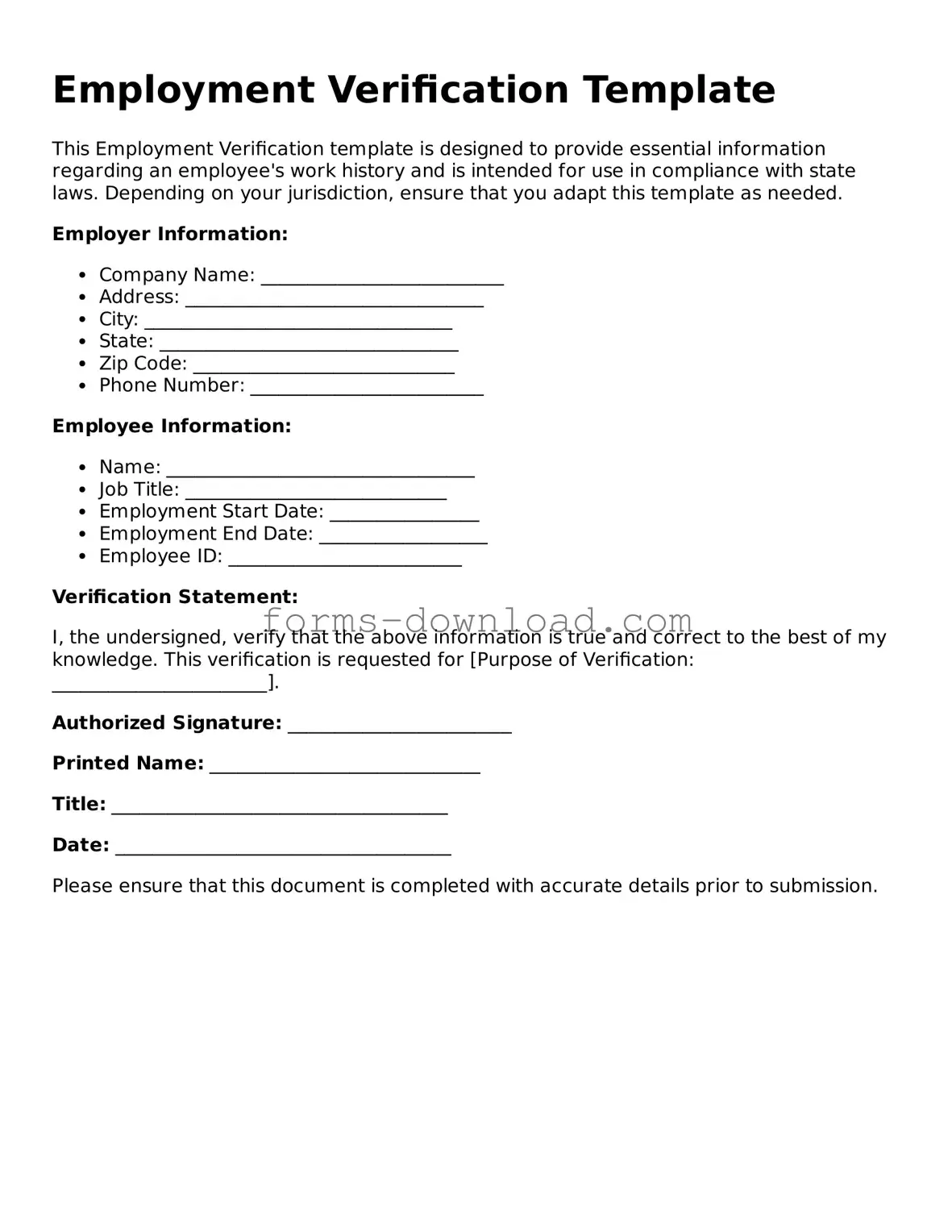Employment Verification Template
This Employment Verification template is designed to provide essential information regarding an employee's work history and is intended for use in compliance with state laws. Depending on your jurisdiction, ensure that you adapt this template as needed.
Employer Information:
- Company Name: __________________________
- Address: ________________________________
- City: _________________________________
- State: ________________________________
- Zip Code: ____________________________
- Phone Number: _________________________
Employee Information:
- Name: _________________________________
- Job Title: ____________________________
- Employment Start Date: ________________
- Employment End Date: __________________
- Employee ID: _________________________
Verification Statement:
I, the undersigned, verify that the above information is true and correct to the best of my knowledge. This verification is requested for [Purpose of Verification: _______________________].
Authorized Signature: ________________________
Printed Name: _____________________________
Title: ____________________________________
Date: ____________________________________
Please ensure that this document is completed with accurate details prior to submission.
